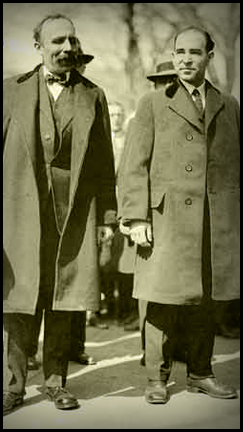HERE WIP, two scenes: History; Taco and Spaghetti
RAW documentation of the Work in Progress at HERE's 2013 Culturemart. The work in progress focused on two scenes from the show: The History of Sacco and Vanzetti as told through a series of objects in no particular order, and Taco and Spaghetti. The final show is entitled Send for the Million Men and should premier in the fall of 2014.
April 15, 1920 – Parmenter and Berardelli, carrying a payroll of $16,000, killed by gunmen at S. Braintree, Mass. Bandits made away with cash.
May 5, 1920 – Sacco and Vanzetti arrested, charged with being “suspicious characters.”
September 14, 1920 – Sacco and Vanzetti indicted for murder.
July 14, 1921 – Verdict of guilty of murder in the first degree returned by jury against both men.
October 1, 1923 – second application for a new trial denied by Judge. Evidence of crime was circumstantial and had to do principally with the identification of killers in a moving automobile. Two cars were used by the bandits. Neither Sacco or Vanzetti owned a car nor known to have a friend who owned a Buick or Hudson, the cars used in the crime. Neither of them knew how to drive a car.
May 12, 1926 – The Supreme Court of Massachusetts found “no error” in the rulings of the judge.
August 23, 1927 – Date of electrocution of Sacco and Vanzetti under ruling of Judge.
October 7, 1969 – Joseph Silovsky takes up the case of Sacco and Vanzetti, in particular Vanzetti, who he believes is an overlooked historical figure and true hero.
April 19, 1995 – Silovsky visits the hometowns of Sacco and Vanzetti. He didn’t meet Sacco’s niece. Fell asleep in the wrong train and ended up in the wrong part of Italy.
June 7, 1998 – Silovsky forces an aesthetic compatriot to grow a big, bushy mustache. He then makes him read a book through a small hole in a piece of paper.
October 28th, 2010 - Silovsky attempts to harvest his own mustache with mixed results.
Feb 6th, 2013 - Silovsky executes his first work in progress that clearly embodies the case of Sacco and Vanzetti. He uses his signature fragmentary style, replete with marginalia and near-misses, to tell the story; even so, the audience walks away stunned, feeling the empathy and angst that comes from the deep understanding of a true tragedy.





















